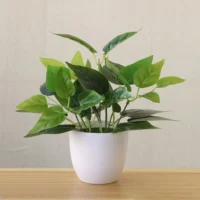Introduction
In the vibrant tapestry of gardening, water is the invisible thread that weaves life into every leaf and blossom. Proper watering is an art and a science, influencing the health and vitality of your garden. In this blog post, we’ll explore the techniques and considerations that can elevate your watering routine and nurture a thriving garden.
Understanding Your Garden’s Water Needs
Plant Diversity
Different plants have varying water requirements:
- Vegetables: Often need consistent moisture for optimal growth.
- Flowering Plants: Require well-timed watering to support blossoms.
- Drought-Tolerant Species: Adapted to withstand periods of dryness.
Soil Type
- Sandy Soil: Drains quickly, requiring more frequent watering.
- Clay Soil: Retains moisture, necessitating less frequent watering.
- Loamy Soil: Offers a balanced approach, retaining water while allowing drainage.
When and How to Water
Best Time of Day
- Morning: Allows plants to absorb water before the heat of the day.
- Evening: Reduces evaporation, ensuring water reaches the roots.
Watering Techniques
- Base Watering: Apply water directly to the soil around the plant base.
- Avoiding Foliage: Minimize moisture on leaves to prevent disease.
Deep Watering
- Encouraging Root Growth: Penetrates the soil, prompting roots to reach deeper.
- Drought Resistance: Establishes a strong root system for better water retention.
Conservation and Efficiency Tips
Mulching
- Moisture Retention: Reduces evaporation and helps soil retain water.
- Weed Control: Suppresses weeds that compete for water.
Watering Tools
- Soaker Hoses: Deliver water directly to the soil, minimizing runoff.
- Drip Irrigation: Provides a controlled and efficient watering system.
Rainwater Harvesting
- Sustainable Water Source: Collect rainwater for garden use.
- Reduced Water Bills: Supplementing with harvested rainwater can cut costs.
Signs of Overwatering and Underwatering
Overwatering
- Yellowing Leaves: A sign of root suffocation due to waterlogged soil.
- Fungus Growth: Excessive moisture can lead to fungal issues.
Underwatering
- Wilting: Plants may droop and appear stressed.
- Stunted Growth: Lack of water hinders normal development.
Success Stories: Gardens Flourishing with Careful Watering
Explore stories from gardeners who have achieved remarkable results by fine-tuning their watering practices. Learn from their experiences and discover the techniques that worked best for their specific gardening needs.
Conclusion
In the delicate dance of gardening, watering emerges as a choreography of care. By understanding the unique needs of your garden, adopting efficient watering techniques, and observing the subtle signs of your plants, you’ll cultivate a lush and vibrant oasis. Here’s to nourishing your garden and watching it bloom!








